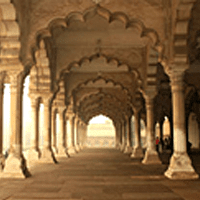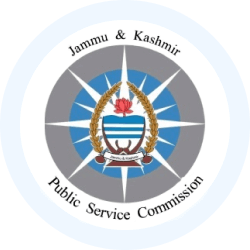Best Study Material for JKPSC KAS (Jammu and Kashmir) Exam
JKPSC KAS (Jammu and Kashmir) Exam > JKPSC KAS (Jammu and Kashmir) Notes > JKPSC KAS (Jammu and Kashmir): Preparation Course > Physiography of Jammu and Kashmir
Physiography of Jammu and Kashmir | JKPSC KAS (Jammu and Kashmir): Preparation Course PDF Download
| Download, print and study this document offline |
Please wait while the PDF view is loading
Page 1 PHYSIOGRAPHYOF JAMMUANDKASHMIR The state of Jammu and Kashmir is the Northernmost state of India. It lies in the Himalayan mountains. A large portion of the terrain of the state is hilly area which varies from 3000 feet (914 m) to 22740 feet (6931m) in height above sea level. Jammu and Kashmir is also comprised of several valleys namely, Kashmir valley, Tawi valley, Poonch valley, Sind valley, Chenab valley and Lidder valley. Location JammuandKashmirliesbetween32 17 ° 'N and36 58 ° 'N latitudesand73 26 ° 'E and 80 30 ° 'E longitudes.Thestatehasanareaof222236sqkm.Alargepart ofthestate isunderthecontrolofPakistanandChina.Thus,IndianGovernmenthasanarea about101387sqkmofJammuandKashmir.JammuandKashmiristhe5thlargest stateofIndiaandoccupiesabout6.76%ofthecountry’stotalgeographicalarea. Populationwiseitisthe19thlargeststateofthecountry. Boundaries ThestateofJammuandKashmirsharesitsborderswithIndian statesofHimachal PradeshandPunjabintheSouth,PakistanintheWest,AfghanistanintheNorth andChinaintheNorth-East.TheLineofControl(LoC)separatesitfrom PakistaniadministeredterritoriesofAzadKashmirandGilgit-BalistanintheWest andNorth-Westrespectively. Physiographic Divisions of Jammu and Kashmir Geographically,thestateisdividedintosevenphysiographicdivisions.These divisionsarecloselylinkedwiththestructuralcomponentsoftheWestern Himalayas.These divisions are: 1. Plains 2.Foothills 3.Lesser Himalayas 4. Greater Himalayas 5.Valley of Kashmir 6.Upper Indus Valley 7. The Karakoram Region Page 2 PHYSIOGRAPHYOF JAMMUANDKASHMIR The state of Jammu and Kashmir is the Northernmost state of India. It lies in the Himalayan mountains. A large portion of the terrain of the state is hilly area which varies from 3000 feet (914 m) to 22740 feet (6931m) in height above sea level. Jammu and Kashmir is also comprised of several valleys namely, Kashmir valley, Tawi valley, Poonch valley, Sind valley, Chenab valley and Lidder valley. Location JammuandKashmirliesbetween32 17 ° 'N and36 58 ° 'N latitudesand73 26 ° 'E and 80 30 ° 'E longitudes.Thestatehasanareaof222236sqkm.Alargepart ofthestate isunderthecontrolofPakistanandChina.Thus,IndianGovernmenthasanarea about101387sqkmofJammuandKashmir.JammuandKashmiristhe5thlargest stateofIndiaandoccupiesabout6.76%ofthecountry’stotalgeographicalarea. Populationwiseitisthe19thlargeststateofthecountry. Boundaries ThestateofJammuandKashmirsharesitsborderswithIndian statesofHimachal PradeshandPunjabintheSouth,PakistanintheWest,AfghanistanintheNorth andChinaintheNorth-East.TheLineofControl(LoC)separatesitfrom PakistaniadministeredterritoriesofAzadKashmirandGilgit-BalistanintheWest andNorth-Westrespectively. Physiographic Divisions of Jammu and Kashmir Geographically,thestateisdividedintosevenphysiographicdivisions.These divisionsarecloselylinkedwiththestructuralcomponentsoftheWestern Himalayas.These divisions are: 1. Plains 2.Foothills 3.Lesser Himalayas 4. Greater Himalayas 5.Valley of Kashmir 6.Upper Indus Valley 7. The Karakoram Region 1. Plains Theplainsofthestatewereformedbytheerodedbedrockmaterialbroughtdown bythemightyriverchenab,Ravi,Tawi,Ujh,Basantaretc.Theouterplainsare locallyknownas ‘Andarwah’ or ‘Bajwat’.Theouterplainsistraversedbynumerous hilltorrentsknownasKhadmostoftheyeartheseKhadsaredry,butinrainy seasonsthesetorrentsturnintohugegushingrivers.Herewefindweedgrowth, locallyknownasKharorelephantinegrass.ThisregionstretchesintheSouthern partsofAkhnoor,RanbirsinghPura(RSPura),SambaandKathuaareasofJammu andKashmir. 2. Foothills ThefoothillsoftheHimalayasareknownas Shiwaliks whicharemadeofthe youngertertiaryrocks.ThewidthoftheShiwaliksinthestateisbetween20to 50km.ThefoothillsoftheHimalayasformtheouterandinner zoneshavinga heightof600mto1500minthestate. Theouterzoneoffoothillsiscomprisedoflongridgesandlongitudinalvalleys, calledDuns e.g.DunsofUdhampurandKotli.TheseDunsarearesultoferosionof sandstone,clayandsiltoftheregion.Theinnerzonehassteepslopeandplateau residueduetofoldinganderosionactivitiesonthesedimentaryrocks.The undulatingslopesofShiwalikbetweenRaviandChenabriversareknownasKandi. Itisadjacenttotheplainsuptoaheightof300m.Theareasof thestatewhichliein theShiwalikhillsareJammu,Mirpur,UdhampurandRiasi. 3. Lesser Himalayas ItisalsoknownasMiddleHimalayas whichliebetweentheRavi(intheEast)and thePoonch(intheWest).Thisregioniscomposedofvolcanic rocksofgranite, gneiss,quartz,etc.Theaverageelevationofthisregionis 3600-4600m.Two importantrangesnamelyPirPanjal (5000m)andDhauladhar arepartofthis region.InJammuregion,theserangesarelocallyknownas Pahar.PirPanjalisthe longestandthei.e.Westernmostrangeofthisregion. VaishnoDevicaveissituatedonapeakofTrikutamountainin thisregion.Many rivershavetheirsourceinthemiddleHimalayaslikeTawi,Manawar-Tawi,Basantra andUjhrivers. 4. Greater Himalayas ThiszoneliestotheNorthofthePirPanjalandDhauladharranges,havingan averageheightsbetween4500to6100m.IntheNorth,Kashmir rangeformsthe partofZanskarrangeandalsoformstheNorth-EasternborderoftheKashmir valley.ThereareafewpeaksintheZanskarrangehavingaheightof4500mto 6100mabovesealevel.Thealtitudeofthisregionincreases totheNorthtillthe K-2(GodwinAustin)peakontheKarakoramorMustangrange.K-2isthesecond highestpeakoftheworldwithaheightof8611m.Therangesof Greater HimalayaspreventthecoldwindsoftheCentralAsiatoenter intoIndia. Page 3 PHYSIOGRAPHYOF JAMMUANDKASHMIR The state of Jammu and Kashmir is the Northernmost state of India. It lies in the Himalayan mountains. A large portion of the terrain of the state is hilly area which varies from 3000 feet (914 m) to 22740 feet (6931m) in height above sea level. Jammu and Kashmir is also comprised of several valleys namely, Kashmir valley, Tawi valley, Poonch valley, Sind valley, Chenab valley and Lidder valley. Location JammuandKashmirliesbetween32 17 ° 'N and36 58 ° 'N latitudesand73 26 ° 'E and 80 30 ° 'E longitudes.Thestatehasanareaof222236sqkm.Alargepart ofthestate isunderthecontrolofPakistanandChina.Thus,IndianGovernmenthasanarea about101387sqkmofJammuandKashmir.JammuandKashmiristhe5thlargest stateofIndiaandoccupiesabout6.76%ofthecountry’stotalgeographicalarea. Populationwiseitisthe19thlargeststateofthecountry. Boundaries ThestateofJammuandKashmirsharesitsborderswithIndian statesofHimachal PradeshandPunjabintheSouth,PakistanintheWest,AfghanistanintheNorth andChinaintheNorth-East.TheLineofControl(LoC)separatesitfrom PakistaniadministeredterritoriesofAzadKashmirandGilgit-BalistanintheWest andNorth-Westrespectively. Physiographic Divisions of Jammu and Kashmir Geographically,thestateisdividedintosevenphysiographicdivisions.These divisionsarecloselylinkedwiththestructuralcomponentsoftheWestern Himalayas.These divisions are: 1. Plains 2.Foothills 3.Lesser Himalayas 4. Greater Himalayas 5.Valley of Kashmir 6.Upper Indus Valley 7. The Karakoram Region 1. Plains Theplainsofthestatewereformedbytheerodedbedrockmaterialbroughtdown bythemightyriverchenab,Ravi,Tawi,Ujh,Basantaretc.Theouterplainsare locallyknownas ‘Andarwah’ or ‘Bajwat’.Theouterplainsistraversedbynumerous hilltorrentsknownasKhadmostoftheyeartheseKhadsaredry,butinrainy seasonsthesetorrentsturnintohugegushingrivers.Herewefindweedgrowth, locallyknownasKharorelephantinegrass.ThisregionstretchesintheSouthern partsofAkhnoor,RanbirsinghPura(RSPura),SambaandKathuaareasofJammu andKashmir. 2. Foothills ThefoothillsoftheHimalayasareknownas Shiwaliks whicharemadeofthe youngertertiaryrocks.ThewidthoftheShiwaliksinthestateisbetween20to 50km.ThefoothillsoftheHimalayasformtheouterandinner zoneshavinga heightof600mto1500minthestate. Theouterzoneoffoothillsiscomprisedoflongridgesandlongitudinalvalleys, calledDuns e.g.DunsofUdhampurandKotli.TheseDunsarearesultoferosionof sandstone,clayandsiltoftheregion.Theinnerzonehassteepslopeandplateau residueduetofoldinganderosionactivitiesonthesedimentaryrocks.The undulatingslopesofShiwalikbetweenRaviandChenabriversareknownasKandi. Itisadjacenttotheplainsuptoaheightof300m.Theareasof thestatewhichliein theShiwalikhillsareJammu,Mirpur,UdhampurandRiasi. 3. Lesser Himalayas ItisalsoknownasMiddleHimalayas whichliebetweentheRavi(intheEast)and thePoonch(intheWest).Thisregioniscomposedofvolcanic rocksofgranite, gneiss,quartz,etc.Theaverageelevationofthisregionis 3600-4600m.Two importantrangesnamelyPirPanjal (5000m)andDhauladhar arepartofthis region.InJammuregion,theserangesarelocallyknownas Pahar.PirPanjalisthe longestandthei.e.Westernmostrangeofthisregion. VaishnoDevicaveissituatedonapeakofTrikutamountainin thisregion.Many rivershavetheirsourceinthemiddleHimalayaslikeTawi,Manawar-Tawi,Basantra andUjhrivers. 4. Greater Himalayas ThiszoneliestotheNorthofthePirPanjalandDhauladharranges,havingan averageheightsbetween4500to6100m.IntheNorth,Kashmir rangeformsthe partofZanskarrangeandalsoformstheNorth-EasternborderoftheKashmir valley.ThereareafewpeaksintheZanskarrangehavingaheightof4500mto 6100mabovesealevel.Thealtitudeofthisregionincreases totheNorthtillthe K-2(GodwinAustin)peakontheKarakoramorMustangrange.K-2isthesecond highestpeakoftheworldwithaheightof8611m.Therangesof Greater HimalayaspreventthecoldwindsoftheCentralAsiatoenter intoIndia. 5. Valley of Kashmir ItisdeepasymmetricalbasinwhichliesbetweenthePirPanjalandthei.e.Western endoftheGreatHimalayanranges. Thesemountainrangerisinguptoaheightof 5500m.Itisfilledbysedimentsoflakesandalluviumdepositedbytheupper Jhelumriver.Thereareextensiveelevatedplateauofalluvialandlacustrinematerial. Thesedepositsorplateausareknownas Karewas. WithinthevalleyofKashmir,therearethreeimportantside valleysnamely,the Liddervalley,theSindvalleyandtheLolabvalley.ItcomprisesAnantnag, Baramulla,Bodgam,Srinagar,Pulwama,Kupwara,Bandipora,Ganderbal,Kulgam andShopiandistrictsofthestate. 6. Upper Indus Valley ThisvalleyincludestheareasfromtheTibetanbordertothe pointinthePakistani regionofKashmir(Westward).TheIndusriverinthisvalley flowsthroughNanga Parbat(8126m)totheSouthwardformingdeepgorges.Theupperpart ofIndus riverisboundedbygravelterraces.Eachtributaryofthisriverbuildsanalluvialfan inthemainvalley.Lehtownislocated(3500m)inthisvalley. 7. The Karakoram Region ItliesintheIndianandPakistaniKashmirandcomprisesofsomeoftheworld’s highestpeaks.Forexample,K-2,(8611m)whichliesonthePakistaniborderand oneoftheChinese-administeredenclaves.Itismadeofgraniteandgneissrocks. Thereareotherpeaksinthisregionwhichhaveaheightmorethan7300mabove sealevel.TheKarakoramregionremainsheavilyglaciatedalltheyearround.The Karakoram,alongwithotherareasinandaroundtheHimalayanregionisknownas the‘RoofoftheWorld’. Famous Mountains in Jammu and Kashmir MostofthepartofJammuandKashmirstateisformedbymountains,thus mountainshaveagreatimportanceforthestate.TheKashmir valleyissurrounded byhighmountainrangesandanarrowgorgeatBaramulla.TheSouthernpartofthe statehasShiwalikhillsandtheNorthernpartisalsocoveredbytheloftymountains. Some of the important mountains are discussed below: Amarnath ItislocatedinGanderbaldistrictofJammuandKashmir.Itisabout5186min height.Itisalsofamousforitsholycave,Amarnathwhichcanbereachedthrough theMahagunaspass(1475m).ThemountainhasLiddervalleywhereGwasharan (5450m)issituatedtowardsPahalgam.KolahiGlacierissituatedhere.Thisvalley alsohas‘Sheshnagmountain’.Amarnathcaveisbelievedtobetheancientand amongmostsacredplacesforpilgrimageinHinduism. Page 4 PHYSIOGRAPHYOF JAMMUANDKASHMIR The state of Jammu and Kashmir is the Northernmost state of India. It lies in the Himalayan mountains. A large portion of the terrain of the state is hilly area which varies from 3000 feet (914 m) to 22740 feet (6931m) in height above sea level. Jammu and Kashmir is also comprised of several valleys namely, Kashmir valley, Tawi valley, Poonch valley, Sind valley, Chenab valley and Lidder valley. Location JammuandKashmirliesbetween32 17 ° 'N and36 58 ° 'N latitudesand73 26 ° 'E and 80 30 ° 'E longitudes.Thestatehasanareaof222236sqkm.Alargepart ofthestate isunderthecontrolofPakistanandChina.Thus,IndianGovernmenthasanarea about101387sqkmofJammuandKashmir.JammuandKashmiristhe5thlargest stateofIndiaandoccupiesabout6.76%ofthecountry’stotalgeographicalarea. Populationwiseitisthe19thlargeststateofthecountry. Boundaries ThestateofJammuandKashmirsharesitsborderswithIndian statesofHimachal PradeshandPunjabintheSouth,PakistanintheWest,AfghanistanintheNorth andChinaintheNorth-East.TheLineofControl(LoC)separatesitfrom PakistaniadministeredterritoriesofAzadKashmirandGilgit-BalistanintheWest andNorth-Westrespectively. Physiographic Divisions of Jammu and Kashmir Geographically,thestateisdividedintosevenphysiographicdivisions.These divisionsarecloselylinkedwiththestructuralcomponentsoftheWestern Himalayas.These divisions are: 1. Plains 2.Foothills 3.Lesser Himalayas 4. Greater Himalayas 5.Valley of Kashmir 6.Upper Indus Valley 7. The Karakoram Region 1. Plains Theplainsofthestatewereformedbytheerodedbedrockmaterialbroughtdown bythemightyriverchenab,Ravi,Tawi,Ujh,Basantaretc.Theouterplainsare locallyknownas ‘Andarwah’ or ‘Bajwat’.Theouterplainsistraversedbynumerous hilltorrentsknownasKhadmostoftheyeartheseKhadsaredry,butinrainy seasonsthesetorrentsturnintohugegushingrivers.Herewefindweedgrowth, locallyknownasKharorelephantinegrass.ThisregionstretchesintheSouthern partsofAkhnoor,RanbirsinghPura(RSPura),SambaandKathuaareasofJammu andKashmir. 2. Foothills ThefoothillsoftheHimalayasareknownas Shiwaliks whicharemadeofthe youngertertiaryrocks.ThewidthoftheShiwaliksinthestateisbetween20to 50km.ThefoothillsoftheHimalayasformtheouterandinner zoneshavinga heightof600mto1500minthestate. Theouterzoneoffoothillsiscomprisedoflongridgesandlongitudinalvalleys, calledDuns e.g.DunsofUdhampurandKotli.TheseDunsarearesultoferosionof sandstone,clayandsiltoftheregion.Theinnerzonehassteepslopeandplateau residueduetofoldinganderosionactivitiesonthesedimentaryrocks.The undulatingslopesofShiwalikbetweenRaviandChenabriversareknownasKandi. Itisadjacenttotheplainsuptoaheightof300m.Theareasof thestatewhichliein theShiwalikhillsareJammu,Mirpur,UdhampurandRiasi. 3. Lesser Himalayas ItisalsoknownasMiddleHimalayas whichliebetweentheRavi(intheEast)and thePoonch(intheWest).Thisregioniscomposedofvolcanic rocksofgranite, gneiss,quartz,etc.Theaverageelevationofthisregionis 3600-4600m.Two importantrangesnamelyPirPanjal (5000m)andDhauladhar arepartofthis region.InJammuregion,theserangesarelocallyknownas Pahar.PirPanjalisthe longestandthei.e.Westernmostrangeofthisregion. VaishnoDevicaveissituatedonapeakofTrikutamountainin thisregion.Many rivershavetheirsourceinthemiddleHimalayaslikeTawi,Manawar-Tawi,Basantra andUjhrivers. 4. Greater Himalayas ThiszoneliestotheNorthofthePirPanjalandDhauladharranges,havingan averageheightsbetween4500to6100m.IntheNorth,Kashmir rangeformsthe partofZanskarrangeandalsoformstheNorth-EasternborderoftheKashmir valley.ThereareafewpeaksintheZanskarrangehavingaheightof4500mto 6100mabovesealevel.Thealtitudeofthisregionincreases totheNorthtillthe K-2(GodwinAustin)peakontheKarakoramorMustangrange.K-2isthesecond highestpeakoftheworldwithaheightof8611m.Therangesof Greater HimalayaspreventthecoldwindsoftheCentralAsiatoenter intoIndia. 5. Valley of Kashmir ItisdeepasymmetricalbasinwhichliesbetweenthePirPanjalandthei.e.Western endoftheGreatHimalayanranges. Thesemountainrangerisinguptoaheightof 5500m.Itisfilledbysedimentsoflakesandalluviumdepositedbytheupper Jhelumriver.Thereareextensiveelevatedplateauofalluvialandlacustrinematerial. Thesedepositsorplateausareknownas Karewas. WithinthevalleyofKashmir,therearethreeimportantside valleysnamely,the Liddervalley,theSindvalleyandtheLolabvalley.ItcomprisesAnantnag, Baramulla,Bodgam,Srinagar,Pulwama,Kupwara,Bandipora,Ganderbal,Kulgam andShopiandistrictsofthestate. 6. Upper Indus Valley ThisvalleyincludestheareasfromtheTibetanbordertothe pointinthePakistani regionofKashmir(Westward).TheIndusriverinthisvalley flowsthroughNanga Parbat(8126m)totheSouthwardformingdeepgorges.Theupperpart ofIndus riverisboundedbygravelterraces.Eachtributaryofthisriverbuildsanalluvialfan inthemainvalley.Lehtownislocated(3500m)inthisvalley. 7. The Karakoram Region ItliesintheIndianandPakistaniKashmirandcomprisesofsomeoftheworld’s highestpeaks.Forexample,K-2,(8611m)whichliesonthePakistaniborderand oneoftheChinese-administeredenclaves.Itismadeofgraniteandgneissrocks. Thereareotherpeaksinthisregionwhichhaveaheightmorethan7300mabove sealevel.TheKarakoramregionremainsheavilyglaciatedalltheyearround.The Karakoram,alongwithotherareasinandaroundtheHimalayanregionisknownas the‘RoofoftheWorld’. Famous Mountains in Jammu and Kashmir MostofthepartofJammuandKashmirstateisformedbymountains,thus mountainshaveagreatimportanceforthestate.TheKashmir valleyissurrounded byhighmountainrangesandanarrowgorgeatBaramulla.TheSouthernpartofthe statehasShiwalikhillsandtheNorthernpartisalsocoveredbytheloftymountains. Some of the important mountains are discussed below: Amarnath ItislocatedinGanderbaldistrictofJammuandKashmir.Itisabout5186min height.Itisalsofamousforitsholycave,Amarnathwhichcanbereachedthrough theMahagunaspass(1475m).ThemountainhasLiddervalleywhereGwasharan (5450m)issituatedtowardsPahalgam.KolahiGlacierissituatedhere.Thisvalley alsohas‘Sheshnagmountain’.Amarnathcaveisbelievedtobetheancientand amongmostsacredplacesforpilgrimageinHinduism. Afarwat ThismountainspreadsthroughtheGulmargvalley.Itisabout4390minheight. Alpatharspringliesonitpeak.NullahNagalhasitsoriginfromthisspringwhich flowsdownandmeetstheWularlake. Burzil ThismountaindividesKashmirandLadakhregionwhereBurzilpassissituatedata heightof4100m.Burzilpassisanancientpassandcaravanroute.Thepasslies closetotheLineofControldemarcatingIndiaandPakistanroutebetweenSrinagar (Kashmir)andGilgit. Karakoram and Kyunlun TheserangesliesintheNorthandNorth-EastpartofJammuandKashmirwhich separatethestatefromRussianTurkistanandTibet.TheHindukushrangeextends towardstheKarakoramrangeintheNorth-Westpart,whereK-2peaklies. Gasherbrum(8570m)andMasherbrum(7827m)peaksarealsosituatedhere. Karakorampass(5352m)andNubrapass(5800m)areusedbypeoplefortravelling purposefromLadakhtoChineseTurkistanandKhattan.Inthe samewayKhardung Lapass(5557m)andChangLapass(5609m)arealsousedfromLadakhtoTibet. Nanga Parbat ThismountainrangeliesinGilgit.Itisabout8107minheightandthe9thhighest mountainintheworld.Itisutterlydevoidofvegetation.It islocatedinthePakistani administeredsectorofKashmir.Inlocallanguage,itisknownas‘Diamer’which means‘KingofMountains’. Harmukh Mountain ItisalsoknownasmountHarmukh.Itislocatedatanelevationof5142mtsin GanderbaldistrictofJammuandKashmir.ItisapartoftheHimalayanrangeandis locatedbetweenNallahSindhintheSouthandNeelumriverin theNorth.Itis mostlyclimbedfromtheNorth-WesternsideofBandipore.It isconsideredoneof thesacredmountainsbyHindus,asaccordingtoHindumythologyitistheabodeof LordShiva. Nun Kun ItliesbetweenLadakhandKashmirborder.Itisabout7135minheight.Kullulies onitsSouth-EastpartandKargiltehsilofLadakhlieson its North-Westpart.This mountainmassifcomprisesoftwopeaksofHimalayasnamelyNun(7135m)and Kun(7077m).NunisthehighestpeakinthepartoftheHimalayanrangelyingon theIndiansideoftheLineofControlinJammuandKashmir.Bawalochapass (4891m)liesbetweenLehandKullu. Page 5 PHYSIOGRAPHYOF JAMMUANDKASHMIR The state of Jammu and Kashmir is the Northernmost state of India. It lies in the Himalayan mountains. A large portion of the terrain of the state is hilly area which varies from 3000 feet (914 m) to 22740 feet (6931m) in height above sea level. Jammu and Kashmir is also comprised of several valleys namely, Kashmir valley, Tawi valley, Poonch valley, Sind valley, Chenab valley and Lidder valley. Location JammuandKashmirliesbetween32 17 ° 'N and36 58 ° 'N latitudesand73 26 ° 'E and 80 30 ° 'E longitudes.Thestatehasanareaof222236sqkm.Alargepart ofthestate isunderthecontrolofPakistanandChina.Thus,IndianGovernmenthasanarea about101387sqkmofJammuandKashmir.JammuandKashmiristhe5thlargest stateofIndiaandoccupiesabout6.76%ofthecountry’stotalgeographicalarea. Populationwiseitisthe19thlargeststateofthecountry. Boundaries ThestateofJammuandKashmirsharesitsborderswithIndian statesofHimachal PradeshandPunjabintheSouth,PakistanintheWest,AfghanistanintheNorth andChinaintheNorth-East.TheLineofControl(LoC)separatesitfrom PakistaniadministeredterritoriesofAzadKashmirandGilgit-BalistanintheWest andNorth-Westrespectively. Physiographic Divisions of Jammu and Kashmir Geographically,thestateisdividedintosevenphysiographicdivisions.These divisionsarecloselylinkedwiththestructuralcomponentsoftheWestern Himalayas.These divisions are: 1. Plains 2.Foothills 3.Lesser Himalayas 4. Greater Himalayas 5.Valley of Kashmir 6.Upper Indus Valley 7. The Karakoram Region 1. Plains Theplainsofthestatewereformedbytheerodedbedrockmaterialbroughtdown bythemightyriverchenab,Ravi,Tawi,Ujh,Basantaretc.Theouterplainsare locallyknownas ‘Andarwah’ or ‘Bajwat’.Theouterplainsistraversedbynumerous hilltorrentsknownasKhadmostoftheyeartheseKhadsaredry,butinrainy seasonsthesetorrentsturnintohugegushingrivers.Herewefindweedgrowth, locallyknownasKharorelephantinegrass.ThisregionstretchesintheSouthern partsofAkhnoor,RanbirsinghPura(RSPura),SambaandKathuaareasofJammu andKashmir. 2. Foothills ThefoothillsoftheHimalayasareknownas Shiwaliks whicharemadeofthe youngertertiaryrocks.ThewidthoftheShiwaliksinthestateisbetween20to 50km.ThefoothillsoftheHimalayasformtheouterandinner zoneshavinga heightof600mto1500minthestate. Theouterzoneoffoothillsiscomprisedoflongridgesandlongitudinalvalleys, calledDuns e.g.DunsofUdhampurandKotli.TheseDunsarearesultoferosionof sandstone,clayandsiltoftheregion.Theinnerzonehassteepslopeandplateau residueduetofoldinganderosionactivitiesonthesedimentaryrocks.The undulatingslopesofShiwalikbetweenRaviandChenabriversareknownasKandi. Itisadjacenttotheplainsuptoaheightof300m.Theareasof thestatewhichliein theShiwalikhillsareJammu,Mirpur,UdhampurandRiasi. 3. Lesser Himalayas ItisalsoknownasMiddleHimalayas whichliebetweentheRavi(intheEast)and thePoonch(intheWest).Thisregioniscomposedofvolcanic rocksofgranite, gneiss,quartz,etc.Theaverageelevationofthisregionis 3600-4600m.Two importantrangesnamelyPirPanjal (5000m)andDhauladhar arepartofthis region.InJammuregion,theserangesarelocallyknownas Pahar.PirPanjalisthe longestandthei.e.Westernmostrangeofthisregion. VaishnoDevicaveissituatedonapeakofTrikutamountainin thisregion.Many rivershavetheirsourceinthemiddleHimalayaslikeTawi,Manawar-Tawi,Basantra andUjhrivers. 4. Greater Himalayas ThiszoneliestotheNorthofthePirPanjalandDhauladharranges,havingan averageheightsbetween4500to6100m.IntheNorth,Kashmir rangeformsthe partofZanskarrangeandalsoformstheNorth-EasternborderoftheKashmir valley.ThereareafewpeaksintheZanskarrangehavingaheightof4500mto 6100mabovesealevel.Thealtitudeofthisregionincreases totheNorthtillthe K-2(GodwinAustin)peakontheKarakoramorMustangrange.K-2isthesecond highestpeakoftheworldwithaheightof8611m.Therangesof Greater HimalayaspreventthecoldwindsoftheCentralAsiatoenter intoIndia. 5. Valley of Kashmir ItisdeepasymmetricalbasinwhichliesbetweenthePirPanjalandthei.e.Western endoftheGreatHimalayanranges. Thesemountainrangerisinguptoaheightof 5500m.Itisfilledbysedimentsoflakesandalluviumdepositedbytheupper Jhelumriver.Thereareextensiveelevatedplateauofalluvialandlacustrinematerial. Thesedepositsorplateausareknownas Karewas. WithinthevalleyofKashmir,therearethreeimportantside valleysnamely,the Liddervalley,theSindvalleyandtheLolabvalley.ItcomprisesAnantnag, Baramulla,Bodgam,Srinagar,Pulwama,Kupwara,Bandipora,Ganderbal,Kulgam andShopiandistrictsofthestate. 6. Upper Indus Valley ThisvalleyincludestheareasfromtheTibetanbordertothe pointinthePakistani regionofKashmir(Westward).TheIndusriverinthisvalley flowsthroughNanga Parbat(8126m)totheSouthwardformingdeepgorges.Theupperpart ofIndus riverisboundedbygravelterraces.Eachtributaryofthisriverbuildsanalluvialfan inthemainvalley.Lehtownislocated(3500m)inthisvalley. 7. The Karakoram Region ItliesintheIndianandPakistaniKashmirandcomprisesofsomeoftheworld’s highestpeaks.Forexample,K-2,(8611m)whichliesonthePakistaniborderand oneoftheChinese-administeredenclaves.Itismadeofgraniteandgneissrocks. Thereareotherpeaksinthisregionwhichhaveaheightmorethan7300mabove sealevel.TheKarakoramregionremainsheavilyglaciatedalltheyearround.The Karakoram,alongwithotherareasinandaroundtheHimalayanregionisknownas the‘RoofoftheWorld’. Famous Mountains in Jammu and Kashmir MostofthepartofJammuandKashmirstateisformedbymountains,thus mountainshaveagreatimportanceforthestate.TheKashmir valleyissurrounded byhighmountainrangesandanarrowgorgeatBaramulla.TheSouthernpartofthe statehasShiwalikhillsandtheNorthernpartisalsocoveredbytheloftymountains. Some of the important mountains are discussed below: Amarnath ItislocatedinGanderbaldistrictofJammuandKashmir.Itisabout5186min height.Itisalsofamousforitsholycave,Amarnathwhichcanbereachedthrough theMahagunaspass(1475m).ThemountainhasLiddervalleywhereGwasharan (5450m)issituatedtowardsPahalgam.KolahiGlacierissituatedhere.Thisvalley alsohas‘Sheshnagmountain’.Amarnathcaveisbelievedtobetheancientand amongmostsacredplacesforpilgrimageinHinduism. Afarwat ThismountainspreadsthroughtheGulmargvalley.Itisabout4390minheight. Alpatharspringliesonitpeak.NullahNagalhasitsoriginfromthisspringwhich flowsdownandmeetstheWularlake. Burzil ThismountaindividesKashmirandLadakhregionwhereBurzilpassissituatedata heightof4100m.Burzilpassisanancientpassandcaravanroute.Thepasslies closetotheLineofControldemarcatingIndiaandPakistanroutebetweenSrinagar (Kashmir)andGilgit. Karakoram and Kyunlun TheserangesliesintheNorthandNorth-EastpartofJammuandKashmirwhich separatethestatefromRussianTurkistanandTibet.TheHindukushrangeextends towardstheKarakoramrangeintheNorth-Westpart,whereK-2peaklies. Gasherbrum(8570m)andMasherbrum(7827m)peaksarealsosituatedhere. Karakorampass(5352m)andNubrapass(5800m)areusedbypeoplefortravelling purposefromLadakhtoChineseTurkistanandKhattan.Inthe samewayKhardung Lapass(5557m)andChangLapass(5609m)arealsousedfromLadakhtoTibet. Nanga Parbat ThismountainrangeliesinGilgit.Itisabout8107minheightandthe9thhighest mountainintheworld.Itisutterlydevoidofvegetation.It islocatedinthePakistani administeredsectorofKashmir.Inlocallanguage,itisknownas‘Diamer’which means‘KingofMountains’. Harmukh Mountain ItisalsoknownasmountHarmukh.Itislocatedatanelevationof5142mtsin GanderbaldistrictofJammuandKashmir.ItisapartoftheHimalayanrangeandis locatedbetweenNallahSindhintheSouthandNeelumriverin theNorth.Itis mostlyclimbedfromtheNorth-WesternsideofBandipore.It isconsideredoneof thesacredmountainsbyHindus,asaccordingtoHindumythologyitistheabodeof LordShiva. Nun Kun ItliesbetweenLadakhandKashmirborder.Itisabout7135minheight.Kullulies onitsSouth-EastpartandKargiltehsilofLadakhlieson its North-Westpart.This mountainmassifcomprisesoftwopeaksofHimalayasnamelyNun(7135m)and Kun(7077m).NunisthehighestpeakinthepartoftheHimalayanrangelyingon theIndiansideoftheLineofControlinJammuandKashmir.Bawalochapass (4891m)liesbetweenLehandKullu. Pir Panjal ThismountainrangeliesinthelesserHimalayasandseparatesKashmirvalleyfrom theouterHimalayas.Itisabout5000minheightandcomprisedofmostlyvolcanic rocks.ItstwoimportantpeaksDeoTibba(6001m)and Indrasan(6221m)lieon theEasternendofthismountain.GulmargtowninKashmirliesinthismountain range.IthasmanypasseslikePirPanjalpass(3480m),theBidilpass(4270m), Golabgharpass(3812m),Banihalpass(2835m),Baramullapass(1582m),and HajiPirpass(2750m). Shiwalik ItextendsfromtheNorthoftheouterplainstomiddlemountains/lesserHimalayas. Thismountainrangehasanaverageheightof600mto1500m.It extendsfrom JammuandKashmirtotheBrahmaputravalley.Mohanpassisthemainpassinthis mountainrange.ItisalsoknownasManakParbatinancienttimes. Toshmaidan and Kajinag Toshmaidan(4270m)andKajinag(3700m)aresituatedintheinnerHimalayas. Thesearesnow-cladmountainsbutinsummertheirsnowprovideswatertothe Jhelumriver.ImportantpassesofthismountainrangeareBasmaiGali(3962.4m) andPoonchGali. Volcanic Mountains TwovolcanicmountainpeaksaresituatedinJammuandKashmir.Soyamji(1860m) volcanicpeakliesinNorthMachhipura(Handwara),whichwasonceeruptedfor13 monthsin1934andisnowadormantvolcanicpeak.Theothervolcanicpeakis, KharewawhichliesinPahalgamtehsil,whichisadeadvolcanicpeak.These volcanicmountainarethecauseofearthquakesinKashmir. Zanskar ThismountainrangeseparatestheIndusvalleyfromtheKashmirvalley.Italso separatesZanskarfromLadakh.Itisabout6000minheight.Itishelpfulin preventingSouth-WestcoldwindsfromenteringintoKashmirregion.AtZojiLa pass(3529m),LadakhregionendsandKashmirvalleybegins.Poatpass(5716m) alsoliesinthisrange.Read More
FAQs on Physiography of Jammu and Kashmir - JKPSC KAS (Jammu and Kashmir): Preparation Course
| 1. What are the major physiographic regions of Jammu and Kashmir? |  |
| 2. How does the physiography of Jammu and Kashmir impact the climate of the region? |  |
Ans. The physiography of Jammu and Kashmir influences the climate by creating variations in temperature, precipitation, and vegetation across different regions.
| 3. How has the physiography of Jammu and Kashmir influenced the development of tourism in the region? |  |
Ans. The diverse physiography of Jammu and Kashmir has led to the development of various tourist destinations such as Gulmarg, Pahalgam, and Leh, attracting visitors for different activities like skiing, trekking, and sightseeing.
| 4. What role does the physiography of Jammu and Kashmir play in the agricultural practices of the region? |  |
Ans. The physiography of Jammu and Kashmir affects agricultural practices by determining the types of crops grown at different altitudes and influencing irrigation methods based on the availability of water sources.
| 5. How does the physiography of Jammu and Kashmir impact transportation and connectivity within the region? |  |
Ans. The rugged terrain and high mountains in Jammu and Kashmir present challenges for transportation infrastructure, leading to the construction of roads and tunnels to improve connectivity between different areas.
Related Searches


























